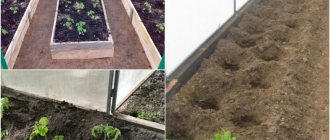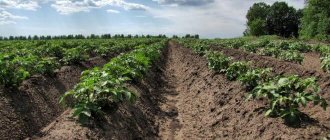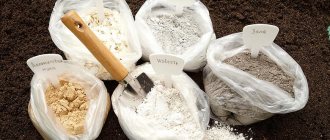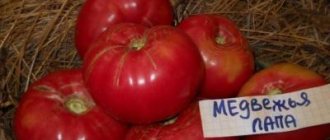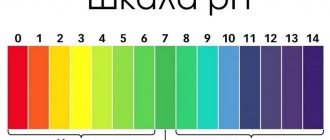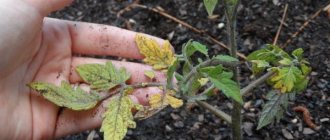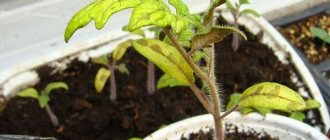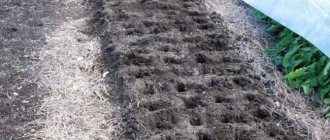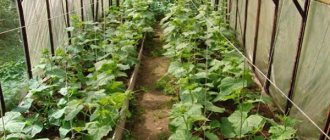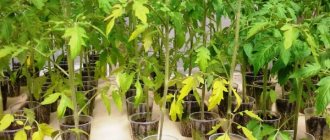Basic soil requirements for growing tomatoes
The soil composition requirements for growing tomatoes depend on the needs of the crop. The main indicators that should be assessed are:
- acidity;
- soil structure;
- humidity.
Tomatoes require soil rich in vitamins and minerals to grow and bear fruit effectively.
Attention! Growing tomatoes in open ground should take place in warm soil with sufficient lighting.
The powerful root system of tomatoes has many branches and shoots that grow in a wide range around the bush. They provide the plant with all the necessary nutrients, minerals and trace elements contained in the soil. The growth process of tomatoes, the quantity and volume of fruits depend on the quality composition of the soil.
Site preparation
Before planting tomatoes, the ground must be prepared. The area for tomatoes is prepared in the fall. When preparing, follow a few rules:
- take care of good lighting of the area;
- the soil should be loose and nutritious;
- the bed cannot be placed in the same place every year;
- do not plant in place after vegetables of the nightshade family;
- It is better to plant them in beds after pumpkin vegetables, cabbage, legumes, onions, and carrots.
If you did not have time to cultivate the area in the fall, then in the spring, before placing the tomatoes in depleted soil, treat the soil with saltpeter in addition to other fertilizers. Apply fertilizers to the soil very carefully, according to the instructions.
An excess of minerals and organic matter harms plants more than their deficiency. They stop bearing fruit and increase their green mass.
Soil acidity for growing tomatoes
One of the most important indicators that should be given great attention is soil acidity. The area where tomatoes are planted should have an acidity level in the range from 6 to 6.8. This is the optimal value, which was determined experimentally.
Soil acidity is a reaction of a chemical property, which is determined by the soil in the form of hydrogen concentration. Indicators obtained during scientific experiments are classified as follows:
| Soil character | Strongly acidic | Sour | Subacid | Neutral |
| pH | 4,5 | 4,5-5,0 | 5,0-5,5 | 5,5-7,0 |
Thus, we see that tomatoes prefer neutral soils. That is, if you have acidic soil in the area where you grow tomatoes, you should neutralize the acidity in various ways.
Is it possible to use soil from the garden?
Vegetable growers have different opinions regarding the use of garden soil for growing tomato seedlings. Some summer residents are sure that ordinary soil from the garden is not suitable for tomato seedlings. It has a too rough structure, which is not designed for delicate and fragile tomato seedlings.
The soil from the beds where peas and nightshade vegetable crops – tomatoes, bell peppers, eggplants and potatoes – were previously grown is especially dangerous for seedlings.
Also, garden soil often has a low content of mineral elements and cannot meet all the needs of growing tomato seedlings.
Other vegetable growers use soil from the garden, believing that this will help the grown seedlings quickly adapt to the conditions of open ground after transplanting. In this case, it is best to use soil from the beds where carrots, corn, zucchini, cucumbers, parsley and other greens were grown. The soil dug up by moles around the holes is also considered a good option.
Determining soil acidity
To determine the acidity of soil for tomatoes, it is optimal to carry out a chemical analysis in a special soil science laboratory. Experienced specialists will make calculations using high-precision equipment and determine not only the acidity index, but also the ratio of nitrogen, potassium, phosphorus and other elements necessary for tomatoes.
Soil acidity can also be determined:
- a special pH meter. The device is stuck into the ground and displays the acidity value accurate to tenths;
- litmus papers. Specialized stores sell ready-made sets of indicators for determining soil acidity. To carry out the analysis, the soil should be taken in several places and placed in distilled water. Each sample is first wrapped in a bandage or gauze. 5 minutes after immersion, litmus paper is lowered into the water. Acidity is determined by color;
It is important! A pink-orange color of a litmus indicator means an acidic reaction, a yellow tint means a slightly acidic reaction, and a greenish color means a neutral reaction.
- folk ways. For crops and weeds growing in the garden, as well as for independently conducted chemical experiments, as a result of which homemade indicators are prepared;
- reaction to mixing water, chalk and earth. The soil sample is placed in a bottle or jar, mixed with chalk powder and filled with water. A fingertip or glove is pulled on top. Filling rubber products with volume indicates an acidic soil reaction.
The most accurate and optimal way to determine soil acidity is in the laboratory. If you have such an opportunity, take advantage of it.
What soil to choose in the store for tomatoes
To save time and effort when planting tomato seedlings, many gardeners purchase ready-made soil mixture in the store. But it is worth noting that it is better to refrain from purchasing cheap substrates from unknown manufacturers. There is a high probability that the package may not contain the exact composition that tomatoes need. It is not worth planting seeds for seedlings in it.
Therefore, you need to read on gardening forums, ask neighbors, friends who deal with seedlings, and only then go to the store. It is important to carefully read the composition printed on the packaging, and also use mixtures specifically for tomatoes. The soil for tomato seedlings is usually marked on the packaging.
A high-quality, professional substrate has many advantages over homemade soil. But it must be a branded, professional soil mixture from well-known manufacturers. Only this will guarantee excellent growth and development of seedlings.
Although professional substrates are not cheap, they are completely worth the investment. Plus, they can be easily mixed with soil mixture prepared at home. The best substrates for tomatoes are Pitfield, Klasmann, Sap Grow, good reviews for domestic substrates from companies like Fusco and Terra Vita.
How to adjust acidity
If you find that your soil is highly acidic, you need to add lime. The basic rules of liming are:
- the procedure should be carried out in the spring before planting seedlings or in the fall after harvesting;
- the area must be free of weeds and other plants;
- the lime mixture must be thoroughly crushed;
- for liming you should choose a calm, clear day;
- lime is poured in a thin layer on the ground.
Digging the earth mass to a depth of 20 cm will ensure the mixing of earth and lime, as well as the introduction of the composition into the deeper layers. As a result, neutralization reactions occur in the soil.
The importance of soil for seedlings
Any seedlings are grown in the ground. The future harvest of tomatoes depends on its quality. If its composition is not sufficiently balanced, the plants will grow weak and sick, so you should not expect a rich harvest from them. In some cases, seedlings may even become sick and die. Therefore, it is important to know what soil to use for tomato seedlings , so that in the future the bushes will be strong, resistant to diseases and produce a large number of tasty fruits.
Soil moisture
Important attention should be paid to the natural moisture of the soil. Tomatoes prefer well-aerated and moist soils. Tomatoes should not be planted in marshy or clayey areas. Over-watering will lead to rotting of the roots.
Choose a site for planting tomatoes where the groundwater is low. To determine the depth of the upper aquifer, evaluate drainage ditches and depressions in the soil. If after rain there is high water in the ditches that does not go away for a long time, this means high groundwater. Choose elevated areas to grow tomatoes.
Regular watering of the crop should be organized. In dry weather, tomatoes are watered once a day in the afternoon. Settled water is used for irrigation.
How to prepare substrate at home
Purchased soil does not always turn out to be of high quality and suitable in all respects.
Therefore, experienced summer residents prefer soil made by themselves.
To do this, you need polyethylene or tarpaulin, onto which the necessary components are poured in exact proportions, and then mixed.
First way:
- Soddy soil, peat and river sand are mixed in equal parts.
- A nutrient solution is prepared (10 l - water, 25-30 g - superphosphate and potassium sulfate, 10 g - urea).
- Water the soil mixture with this solution and let it dry.
Second way:
- Mix equal parts of turf soil, peat and humus.
- Pour two matchboxes of superphosphate and half a liter of wood ash into a 10-12 liter bucket.
- Mix everything thoroughly again.
Preparing the soil for planting yourself has its pros and cons.
Advantages:
- The necessary proportions are observed;
- saving money.
Flaws:
- Cooking takes time;
- If there is an error in the proportions, you will have to start all over again with new soil.
- It is not always possible to find all the necessary elements for a soil mixture.
- Harmful microorganisms may be present in the soil.
Qualitative composition of soils for growing tomatoes
The land on which tomatoes will be planted must contain a sufficient amount of:
- potassium;
- phosphorus;
- nitrogen.
The soil should also contain elements such as manganese, zinc, and selenium.
The soil for growing tomatoes must have a loose structure. This ensures optimal absorption of moisture and all necessary nutrients by the root shoots. Loose soil distributes moisture well and provides the necessary aeration. Waterlogged or clayey soils can cause root rot due to excess moisture.
The area where tomatoes grow should be weeded regularly to prevent weeds from growing. They not only rob the crop of valuable moisture and nutrients and create a lack of sunlight, but can also dump their seeds into the soil. To prevent this, it is necessary to remove weeds at the first shoots.
This is useful! To provide the soil for growing tomatoes with potassium, you need to add potassium salt or wood ash. Ammonium nitrate is used to add nitrogen. Phosphorus is applied using ready-made superphosphate fertilizer.
Another important soil requirement for growing tomatoes is the absence of pests. Larvae in the ground and harmful insects can destroy the entire crop. You should regularly take preventive measures against the appearance of fleas, aphids, midges, mold and viruses. This is provided by ready-made chemical solutions, which are sold in specialized stores, or is achieved by folk methods.
Conditions for choosing a soil mixture
What kind of soil do tomatoes like? Loose nutrient mixtures and loam suit them best. If you use unsuitable soil, the seedlings simply do not sprout, so you cannot count on a harvest.
To prevent this outcome, you need to follow the basic recommendations:
- the sand in the soil should be without clay admixtures - weighting has a negative effect on the seedlings;
- Limitation in the decay stage cannot be used to fertilize seedlings under any circumstances;
- it is necessary to exclude the content of heavy metals in the mixture.
How to organize a bed in open ground for tomatoes
Experienced gardeners use high beds to grow tomatoes, filling them with soil of the optimal composition. To do this, choose a well-lit place without drafts on the site, where:
- install a box of boards or other available material up to 30 cm high. It is important that the joints fit securely to each other in order to prevent soil from being washed out;
- Garden soil is brought into the box. You can dig it up nearby. Layer height is at least 15 cm;
- pour a peat mixture with an acidity of 6.5 about 5 cm high;
- add river sand in a layer of 1-2 cm;
- add wood ash;
- Apply mature compost or rotted manure in a layer of 10 cm.
All components are dug up with a bayonet shovel to a depth of 30 cm. As a result, you get soil that contains all the ingredients for a rich tomato harvest. This composition can be used both for preparing seedlings and for growing tomatoes in greenhouse conditions.
How to prepare the soil at home
To prepare the best nutrient substrate suitable for growing tomatoes, the following requirements must be met:
- the soil should be light, moisture- and breathable;
- do not dry out quickly, absorb and retain moisture well;
- it is desirable to have neutral acidity;
- contain as few weed seeds as possible, and also be disinfected from diseases and pests.
It is important to remember that you can limit yourself to even two components, in particular peat and humus. They must be sifted through a mesh with small cells so that the finished substrate is fine-grained, without lumps and plant debris.
It is worth noting once again that after gaining experience in preparing a substrate for planting tomatoes, you can experiment with the composition to choose the best one. But usually the following components are used:
- peat with neutral acidity or slightly acidic. Without it, the land for tomato seedlings will not be complete; it is used in all growing methods;
- you need well-rotted manure or compost. It is a source of many useful substances, macro and microelements, but above all nitrogen. Plus, its addition improves the soil structure;
- sifted wood ash (you can use dolomite flour or chalk). It is a source of such important elements as potassium, calcium and phosphorus. Plus, the component reduces acidity and is a fungicide that helps prevent or help overcome diseases;
- agroperlite (fine fraction). This harmless natural component will make the substrate more air- and moisture-permeable and help retain moisture. Moreover, its addition will improve even heavy soils;
- sphagnum moss. It improves the structure - the soil for tomatoes becomes more airy and helps retain moisture. In addition, moss is a natural fungicide; adding it to the soil helps prevent fungal diseases;
- leaf or turf soil. It is important not to take such soil from under oak, linden or walnut, it contains a high concentration of tannins. Well suited for planting tomatoes is birch or acacia rotted litter;
- river sand (preferably coarse-grained). Mainly used for loosening soil. In this indicator it loses to perlite;
- long-acting fertilizers - osmocotes or bazacotes.
It is important for gardeners and vegetable gardeners to know the step-by-step steps involved in preparing land for tomato seedlings:
- prepared peat, leaf soil and rotted manure must be thoroughly dried in the sun. This technique allows you to partially prevent the development of diseases and pests. It is convenient and quick to carry out this procedure in a greenhouse;
- then all these components are sifted one by one through a fine-mesh metal mesh or other similar sieve. Sphagnum moss is cut into small pieces with scissors;
- to mix the components, spread greenhouse film on the ground or use a large trough;
- peat is mixed with leaf soil in a 1:1 ratio, then 1/4 of the humus from the total volume of the mixture is added. Everything is mixed;
- add all the leavening components or one of them (agroperlite, river sand, sphagnum moss). They should occupy 1/5 of the total volume of soil;
- Lastly, add long-acting fertilizers in the amount according to the instructions, and 1/10 of the wood ash;
Afterwards, the mixture is thoroughly mixed, disinfected, allowed to “rest” for a while and used for planting tomatoes.
Disinfection
This technique allows you to destroy soil pests, as well as rid the soil of pathogens. Therefore, gardeners should know how to treat the soil. One option is freezing.
In regions with severe cold, the components prepared in the fall are scattered in a thin layer onto a large piece of film or fabric and left to overwinter.
When preparing the substrate in the summer, in extreme heat, the same procedure is carried out in the open sun. Only instead of frost, the scorching rays of the sun help disinfect the soil.
The next method of disinfection is steaming or calcination before planting. When calcining, the soil for tomatoes is poured into an iron trough and placed on an open fire (processing time is 30-40 minutes, depending on the volume). But this method, along with harmful organisms, also kills beneficial microflora. In the second method, the soil for tomatoes is poured into a canvas bag and treated with hot steam for 40-50 minutes.
The last method would be to spray with chemicals in the spring before planting. They use a mixture of fungicide and insecticide, for example, Fundazol and Aktara, as well as a solution of potassium permanganate (potassium permanganate). The dosage is 3 g. for 10 l. water.
Checking the acidity level
When preparing soil for tomatoes, it is difficult to understand what acidity it will have, and this can negatively affect the development of plants. The optimal acidity level is 6.2 -7.0 pH. But it is important to remember that this indicator can only be accurately determined with a high-quality pH meter or in laboratory conditions. The soil for tomato seedlings should never be acidic or highly alkaline. The following methods for determining acidity are usually used:
- litmus paper;
- pH meter;
- vinegar or hydrochloric acid;
- submit for analysis to a laboratory;
- Alyamovsky device;
- grape juice;
- chalk.
Mistakes gardeners make when preparing and caring for soil for tomatoes
Some gardeners underestimate the importance of soil acidity for growing tomatoes and its quality composition. The most common mistakes in soil care are:
- lack of acidity control. Tomatoes will not produce a bountiful harvest if you do not monitor the acidity. Tomatoes prefer neutral soils;
- unsystematic application of organic fertilizers. The addition of mullein, manure and compost changes the acidity of the soil. You should follow the recommendations of agronomists on the timing of organic matter application;
- failure to apply ready-made fertilizers or natural nutritional infusions. Neglecting to feed tomatoes also has a detrimental effect on their development and fruit formation. The soil is quickly depleted and the plant is deficient in nutrients;
- fertilization with compost of inadequate quality. Adding compost to the soil, which uses unacceptable components, affects the quality of the soil. When organizing a compost pit, you should not store pet feces, colored glossy paper, or acidic peat in it. You should also give the compost time to rot;
- adding fresh manure to the soil. Using fresh mullein or bird droppings in their pure form can increase the acidic or alkaline reaction of the soil. It is necessary to wait time for the chemical reactions of neutralization and decomposition to occur in the manure.
Gardeners should also pay attention to soil moisture.
Warm bed
Anyone who wants to get their harvest early can make a warm bed for tomatoes. It has a number of advantages over conventional soil:
- the earth warms up earlier due to decomposing organic matter;
- it does not need to be dug up in the spring;
- the plant is initially provided with all useful substances.
First, a trench is dug, the depth of which is 40 cm. Thick polyethylene is placed on the sides. A layer of branches and twigs, paper, cardboard, newspapers, again bush branches, cut grass and collected leaves from the area are laid out at the bottom. A layer of soil is poured, then a layer of manure is laid out and the soil itself on which the plant will grow, its layer should be approximately 30 cm. The bed is watered with water and covered with straw or agrofibre. In the spring, when the frosts disappear, the bed quickly warms up. Therefore, tomatoes are planted in such soil earlier.
Characteristics of good soil - a little theory
Most vegetables and many flowers can be produced from seedlings (eg tomatoes, peppers, lettuce, celery, leeks, cucumbers, cabbage, eggplant), but all will require a good quality substrate for the seeds to germinate and the seedlings to develop properly.
You can prepare the soil for growing seedlings yourself or buy it at a garden center. Prepared substrates are more expensive, but usually have a better composition and are more convenient to use.
Parameters of a good substrate
Seedlings of vegetables, flowers, and ornamental plants are grown in organic media. What soil is best for seedlings? Good soil should have the following qualities:
- free from pathogens to which seedlings are very sensitive (disinfected);
- finely structured;
- light, airy, water-permeable, which promotes good gas exchange with the environment and does not cause excessive water retention;
- with high moisture capacity;
- must have an appropriate reaction;
- must contain optimal amounts of nutrients for the growth and development of individual plant species.
There is information in the literature that to ensure normal plant growth, the organic substrate must be prepared in the following way:
- solids – 10-30% volume;
- air – 30-40%;
- water – 40-50%.
The soils in which seedlings are grown should not have as much air exchange as soil intended for permanent cultivation, but it is good if they contain more than 20% air after watering.
The basis of the soil is high acid peat
High acidic peat has a high acidity pH (2.5 – 4.5) and a light brown color. Currently, seedlings are grown mainly on substrates prepared from various fractions of high-moor peat, and other organic materials, such as low-lying peat or pine bark, are used less frequently for this purpose. Substrates with a high peat content are the best soils for growing seedlings, provided they are properly prepared and stored, since they are then free from pathogens, pests, and weed seeds, to which young plants are especially sensitive.
Substrates are mainly prepared by specialized companies and delivered to manufacturers in packages of various sizes. Such substrates are usually homogeneous in the composition of individual fractions and adapted to subsequent stages and technology for producing seedlings. Companies producing peat substrates use for their production appropriate mixtures of several types of peat, obtained in different ways and of different granulations:
- 0-10 mm - small,
- 0-20 mm - standard,
- 0-40 mm - large.
The physical properties of the substrate, such as the ability to retain water and its movement in the substrate, depend on the content of individual fractions. If the structure of the substrate is poor, capillary spaces do not form in containers filled with it; as a result, water seeps into the bottom of the pot in one place, and the soil is dry in another.
The moisture content of the peat is also important when grinding it. Peat that is crushed in a too dry state contains a lot of very fine particles - dust, which prevents the substrate from properly absorbing water.
All substrates are enriched with nutrients, usually supplied in the form of multi-component fertilizers. A surfactant is also added to light peat substrates to maintain uniform moisture content throughout the container.
Ready-made soil has an expiration date. It is a material that constantly undergoes chemical changes caused by microorganisms, which occur faster the higher the temperature and humidity during storage. Therefore, the packaging of substrates must indicate the date of manufacture and batch number for identification in case of return.
Reputable manufacturers of substrates for growing seedlings recommend:
- do not store the substrate for longer than 3 months;
- protect the stored substrate from the sun and rain;
- Do not use substrates overgrown with fungi and algae.
When preparing substrates for the production of seedlings, you should independently use high-moor peat, which retains its properties for a long time during transportation and storage in its raw form.
Should I use lowland peat?
Lowland peat, extracted from shallow layers of meadows and garden soils, obtained by composting various organic materials, is a substrate with very different physical and chemical properties. Some growers still use it to grow seedlings, seeing some savings in this. However, it often turns out that preparing seedlings on such substrates is more expensive than in soil made from high-moor peat.
Soils made from low-lying peat can be bad for seedlings and provoke poor plant growth for various reasons:
- runoff of fertilizer from surrounding fields onto the meadows from which peat is extracted, which can occur after heavy rains;
- the use of microbiologically contaminated substrate when composting diseased parts of plants and weeds; The seeds of some types of weeds remain viable for several decades.
Planting seedlings in a greenhouse
Covering the question of how to grow tomatoes in a greenhouse? It must be remembered that in order to grow a good harvest, it is important to follow the rules of planting and care. Seedlings that have reached a height of twenty-five or thirty centimeters can be planted in the ground.
Planting seedlings can be carried out at a ground temperature of at least 120C at a depth of 20 to 25 centimeters. At lower temperatures, seedlings may die or will take a long time to adapt.
It is advisable to plant in the evening or in cloudy weather, having previously moistened and treated the soil with appropriate fertilizers. Plants should be planted to a depth of 12 centimeters, which is sufficient for the favorable development of the plant.
The planting order depends on the type of tomato. The distance between seedlings of low-growing varieties is 35 or 40 centimeters, and between their rows is 55 or 60 centimeters. When planting tall varieties, the distance between sprouts is increased by 25-30 centimeters, and between rows by 20 centimeters.
When planting tomato species with one stem, the planting density is increased by 1/3 in relation to low-growing varieties. Approximately twelve days after transplanting the seedlings, they need to be staked. During this period, the first stepsoning is carried out. It is advisable to carry it out in the morning, removing all stepsons that have reached 8 centimeters except the bottom one.
Cucumbers and tomatoes cannot be grown in the same greenhouse, since they need to maintain different microclimates.
Unacceptable soil mixture components
Under no circumstances should such components be added to the soil mixture for growing tomato seedlings.
Manure
- tomatoes don't like it;
- it increases the acidity level of the soil;
- it contains a lot of nitrogen (green mass will be released);
- There is a possibility that pathogens may be present in the manure.
Poorly rotted leaf humus
Tea leaves, fresh manure and poorly rotted leaves begin to decompose when they get into the soil. They produce a large amount of heat, which can burn the seeds. If the crops are able to germinate, the seedlings will still die due to the high temperature. In addition, organic components, when decomposed, reduce the amount of nitrogen in the soil, which is very harmful for young seedlings.
Soil with clay
Soil containing clay cannot be added to nutrient soil mixtures for growing seedlings. Clay makes the soil denser and heavier, making it difficult for air and moisture to pass through.
Namely, these properties of the soil are very important for seeds and young seedlings; without them, the seedlings will get sick or die.
Soil collected from a highway or chemical plant
You should not collect soil near a busy highway or near chemical plants. This soil contains heavy metals, which are easily absorbed by seedlings during growth.
Also, you cannot add hay dust and soil with insects, worms and weeds to the mixture for germinating seeds.
Advice! It is not recommended to use bird droppings, as they contain a high nitrogen content, and horse droppings, as the tomatoes will be tasteless.
How to fertilize the soil in a greenhouse before planting tomatoes?
At the beginning of the season, the soil in the greenhouse is fertilized with phosphorus and potassium. These elements are vital for plants. They increase immunity, strengthen the root system, and promote rapid ripening of the crop. It is better not to add nitrogen during soil preparation.
Interesting materials:
Why does the mouse sometimes not work? Why did Rostelecom Internet start to work poorly? Why is the Atlant refrigerator loud? Why does the KKM work in offline mode? Why does the computer work and then turn off? Why does the air conditioner work? Why is my tablet running slowly? Why doesn't iMessage work between iPhones? Why doesn't the microphone on my iPhone work? Why might the keys on the keyboard not work?

